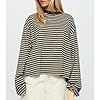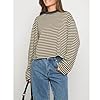Under Armour Men's Tech 1/4 Zip Top
(as of October 6, 2025 16:00 GMT +00:00 - More infoProduct prices and availability are accurate as of the date/time indicated and are subject to change. Any price and availability information displayed on [relevant Amazon Site(s), as applicable] at the time of purchase will apply to the purchase of this product.)1776-2026 Baseball Cap United States 250th Anniversary Eagle Handmade Embroidery Hat for Men Women Adjustable
$17.99 (as of October 6, 2025 16:11 GMT +00:00 - More infoProduct prices and availability are accurate as of the date/time indicated and are subject to change. Any price and availability information displayed on [relevant Amazon Site(s), as applicable] at the time of purchase will apply to the purchase of this product.)Hiking in 50 degree weather may seem straightforward, but the temp can feel quite different depending on sun exposure, precipitation, and exertion levels. Proper layering is key to maintain comfort and avoid potential hazards like hypothermia when the mercury hovers around 50°F.
This comprehensive guide will provide layer-by-layer recommendations for optimal 50 degree hiking attire. We’ll also discuss key factors like activity intensity, sun exposure, and weather to help you dress successfully for the conditions. Time to hit the trail dressed for comfort and safety!
Base Layer Recommendations
The base layer sits directly against your skin, so getting this right is crucial for all-day hiking comfort. Here are the best base layer options when temperatures are around 50°F:
Synthetic Short Sleeve T-Shirt
- Wicks away sweat from skin
- Quick drying and breathable
- Enough insulation for 50°F with exertion
Merino Wool Short Sleeve T-Shirt
- Regulates body temperature
- Naturally antimicrobial
- Soft and non-itchy against skin
Lightweight Long Underwear Top
- Provides extra warmth if needed
- Helps avoid chafing from pack
- Enables quick layering adjustments
Synthetic and merino wool are optimal base layer materials for most 50 degree hikes. Having both short sleeve and lightweight long sleeve gives you options.
Mid Layer Recommendations
The mid layer provides light insulation without overheating. Here are ideal mid layer picks when hiking in 50°F:
Fleece Jacket or Pullover
- Light insulation level
- Breathable and dries quickly
- Full zip for venting and layering
Soft Shell Jacket
- Wind and water resistant outer face
- Stretchy for athletic movement
- Durable and abrasion resistant
Lightweight Down Jacket
- Highly compressible and warm
- Easy to pack if extra insulation needed
- Hood for added warmth
Flannel Shirt or Button Down
- Natural temperature regulation
- Stylish layering option
- Versatile from camp to trail
For 50 degree weather, a fleece jacket or pullover is likely your best bet for a mid layer. But having a range of options gives you flexibility.
Outer Layer Recommendations
The ideal outer layer when hiking at 50°F will depend on the weather. Here are top outer layer picks:
Waterproof Rain Jacket
- Essential if rain is expected
- Helps maintain body heat when wet
- Look for breathable fabrics
Windproof Soft Shell Jacket
- Provides wind resistance without overheating
- Repels light moisture if not raining
- Allows ventilation to avoid sweat buildup
Lightweight Down or Synthetic Insulated Jacket
- Extra insulation if stopping frequently
- Compressible to pack when not needed
- Hood adds warmth
Warm Hat and Gloves
- Help prevent rapid heat loss from head/hands
- Beanie hat ideal for changing temps
- Gloves easily removed and stowed if warm
Having both waterproof and windproof jackets gives you the right outer layer for different conditions. Warm accessories like a hat and gloves are smart to pack as well.
50 Degree Hiking Clothing Summary Table
Here is a summary table of optimal hiking clothing layers when the temperature is around 50°F:
| Clothing Layer | Ideal Options | Primary Purpose |
|---|---|---|
| Base Layer | Synthetic or merino t-shirt, lightweight long sleeve top | Wick moisture, prevent chafing |
| Mid Layer | Fleece jacket, soft shell jacket, lightweight down jacket | Light insulation without overheating |
| Outer Layer | Waterproof rain jacket, windproof soft shell jacket, down/synthetic insulated jacket | Weather protection and extra warmth as needed |
| Head & Hands | Warm hat, gloves | Prevent rapid heat loss in cooler temps |
Adjusting Your Layers
The benefit of the layering system is the ability to adjust clothing based on how your body feels:
- If overheating, shed outer layers and just hike in base + mid layer.
- If sweaty, remove mid layer and hike in breathable base layer to ventilate.
- If chilled from wind or rain, add windproof or waterproof shell as outer layer.
- If really cold, swap t-shirt for long sleeve base layer and add insulating mid layer like down jacket.
Don’t be afraid to open and close zippers, remove layers, and make changes so your clothing matches the conditions and activity level.
Additional 50 Degree Hiking Attire Tips
Here are some other clothing tips for hiking in 50 degree weather:
- Wear breathable and sweat-wicking socks to keep feet dry – smartwool or synthetic fabrics work well
- Pack a spare baselayer top & bottom to change into if current layers get soaked with sweat or rain during the day
- Bring extra gloves/mittens and a warm winter hat to add insulation for breaks and high elevation peaks
- Carry a packable down or synthetic puffy jacket for when stopped for long periods
- Wear gaiters over shoes/boots if hiking through brush, snow, or mud
- Don’t wear bulky cotton layers like hoodies, jeans, etc. which retain moisture and won’t keep you warm when wet
- If warmer than expected, ventilation zippers are your friend – open up layers and use clothing features like pit zips to release excess heat and moisture
Dressing in layers with breathable, moisture wicking fabrics is key to staying comfortable in the variable conditions you’ll encounter hiking around 50°F.
How Pace and Terrain Impact Clothing Needs
Your hiking pace and trail terrain will influence how to dress at 50°F as well:
Fast Paced Hiking
Vigorous hiking generates significant internal heat so you’ll want to wear fewer insulation layers. Consider just a base layer and wind shell to avoid overheating and sweat buildup. Having insulation layers handy in pack is wise though.
Slow Paced Hiking
Taking it easy generates less body heat so you’ll likely want to wear multiple insulation layers while moving slowly. This includes base, mid, and outer layer to retain warmth.
Uphill Hiking
Uphill hiking is aerobic and you’ll heat up faster, requiring fewer and more breathable layers. Focus on wicking away sweat while climbing. Additional insulation may be needed for rests at higher elevation.
Downhill Hiking
Being less aerobic, downhill hiking won’t generate as much internal warmth so more insulation layers are appropriate to stay cozy. Also helpful if stopping for long periods.
Impact of Wind, Rain and Cold
Weather conditions dictate your ideal layering strategy when hiking around 50°F:
Windy Conditions
Strong winds accelerate heat loss from your body so windproof outer layers become important. A wind shirt or softshell jacket blocks gusts so insulation layers still work effectively.
Wet Conditions
Rainy or wet conditions make waterproof outer layers critical. Getting insulation layers like fleece wet severely reduces their ability to retain warmth. Stay dry with a quality rain jacket and rain pants if needed.
Colder Temperatures
If temperatures drop closer to freezing, utilize more insulation by adding a warm mid layer like a down jacket. Swap out short sleeve tee for long sleeve base layer. Wear warm hat and gloves to avoid rapid heat loss in the extremities.
Impact of Sun Exposure
Sun intensity and cloud cover also change insulation needs:
Full Sun
Strong direct sun warms your body considerably, especially with light skin and colors. You can likely get by with fewer lighter insulation layers on sunny 50 degree days.
Partial Sun
If clouds are intermittent, having flexibility in layers allows you to add or remove insulation as needed when moving in and out of sun. Variable cloudiness makes layering options key.
Heavy Cloud Cover
Full cloud cover or fog blocks the warming effects of sunlight. More insulation is recommended to retain heat without the sun’s energy. This includes thicker mid layers and windproof outer layers.
Special Considerations for Women
Female hikers generally run colder than men. Here are some tips to help women stay warm when hiking around 50°F:
- Utilize base layers with long sleeves and full length bottoms for more coverage
- Wear an insulating sports bra as a mid layer underneath your base top
- Choose a windproof outer layer with full front zipper for temperature regulation
- Pack extra insulation like a down jacket for rests and chilly sections
- Bring an extra fleece neck gaiter and warm gloves
- If prone to Raynaud’s syndrome, pack chemical hand warmers
Staying warm and comfortable extends the enjoyment of every hike. Hopefully this detailed guide provides helpful layering recommendations so you can dress successfully for the conditions whenever you hit the trails around 50°F. The right clothing makes all the difference. Now get out there and enjoy the perfect weather for hiking!























